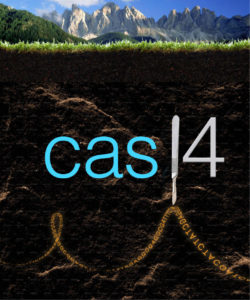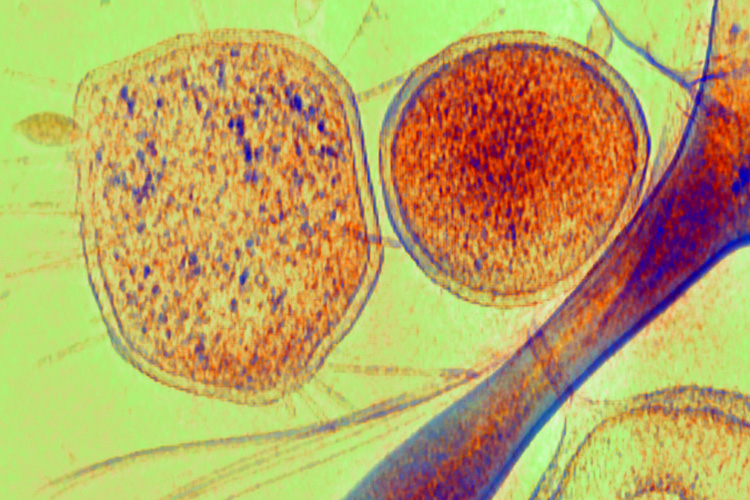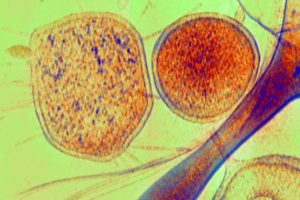
The main Cas14 protein studied was found in the genome of Archaea sequenced from groundwater samples obtained from a toxic cleanup site in Rifle, Colorado. (Credit: Iris Burstein)
By mining a massive database of microbial genomes and metagenomes, a team led by researchers at UC Berkeley and Berkeley Lab has identified a new family of CRISPR-associated (Cas) enzymes found in an ancient branch of the microbial tree of life. Just one-third the size of the seminal Cas9 protein – the business end of the gene-editing tool CRISPR-Cas9 – the new enzymes, dubbed Cas14, are the smallest functional CRISPR system discovered to date.
The sequences were found amid the datasets in the Integrated Microbial Genomes and Microbiomes (IMG/M) suite of tools managed by the U.S. Department of Energy (DOE) Joint Genome Institute (JGI). They were then biochemically characterized by a team led by Jennifer Doudna’s group at UC Berkeley.
Lucas Harrington, a former graduate student in Doudna’s lab, and David Burstein, a former postdoctoral researcher who worked jointly with Doudna and Jillian Banfield, were co-first authors of a paper reporting the discovery in Science. Both Doudna and Banfield are faculty scientists at Berkeley Lab, affiliated with the Biosciences and Earth and Environmental Sciences Areas, respectively.
Cas proteins are part of a defense system evolved by microbes to protect themselves from viruses. All are targeted enzymes that seek out and bind very selectively to a specific DNA or RNA sequence – in microbes, those that match viral sequences stored in its CRISPR memory banks after previous infections – and then cuts the DNA or RNA strand to disable the new invader.
The new family of enzymes complement the existing CRISPR toolbox in several ways. While Cas9 was isolated from bacteria, Cas14 was found in the genome of an superphylum of Archaea known as DPANN, a primitive and elusive group that contains some of the planet’s smallest cells and genomes. And while Cas9 cleaves double-stranded DNA, Cas14 target single-stranded DNA.
Because of its small size, Cas14 could be useful in editing genes in small cells or in some viruses. But with its single-stranded DNA cutting activity, it is more likely to improve rapid CRISPR-based diagnostic systems now under development for infectious diseases, genetic mutations, and cancer.
Doudna, a Howard Hughes Medical Institute investigator and professor of molecular and cell biology and of chemistry at UC Berkeley, co-directs the Innovative Genomics Institute. Banfield, a UC Berkeley professor of earth and planetary science and of environmental sciences, policy and management, is the IGI’s scientific director for microbiology.
JGI’s David Paez-Espino and Nikos Kyrpides were co-authors on the paper.
Read the JGI Science Highlight.
Read the UC Berkeley News Story.





